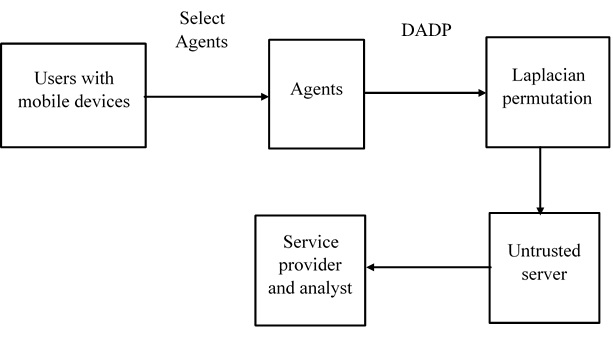- ALL COMPUTER, ELECTRONICS AND MECHANICAL COURSES AVAILABLE…. PROJECT GUIDANCE SINCE 2004. FOR FURTHER DETAILS CALL 9443117328


Projects > COMPUTER > 2020 > NON IEEE > APPLICATION
The continuous publication of aggregate statistics over crowd-sourced data to the public has enabled many data mining applications (e.g., real-time traffic analysis). Existing systems usually rely on a trusted server to aggregate the spatio-temporal crowd-sourced data and then apply differential privacy mechanism to perturb the aggregate statistics before publishing to provide strong privacy guarantee. However, the privacy of users will be exposed once the server is hacked or cannot be trusted. In this project, the problem of real-time crowd-sourced statistical data publishing with strong privacy protection under an untrusted server was studied. A novel distributed agent-based privacy-preserving framework, called DADP, that introduces a new level of multiple agents between the users and the untrusted server was proposed. Instead of directly uploading the check-in information to the untrusted server, a user can randomly select one agent and upload the check-in information to it with the anonymous connection technology. Each agent aggregates the received crowd-sourced data and perturbs the aggregated statistics locally with Laplace mechanism. The perturbed statistics from all the agents are further combined together to form the entire perturbed statistics for publication. In particular, a distributed budget allocation mechanism and an agent-based dynamic grouping mechanism to realize global event differential privacy in a distributed way was proposed. It is proved that DADP can provide event differential privacy for real-time crowd-sourced statistical data publishing under the untrusted server. Extensive experiments on real-world datasets demonstrate the effectiveness of DADP.
A distributed untrusted aggregation mechanism that perturbs data with differential privacy at each endpoint. All these existing systems focus on using cryptography or differential privacy to encrypt or perturb raw data on the data contributor, which can protect the true data individually, but is not suitable for the protection of aggregate statistics over crowd-sourced data, since the perturbation of raw data on each user would not affect the statistic calculation over crowd-sourced data (e.g., the true number of users in one area can still be accurately calculated from the perturbed check-in data of users by the untrusted server). In addition, all existing algorithms under an untrusted server cannot provide strong protection for real-time data publishing. These issues motivate us to design a new differentially private framework for real-time crowd-sourced statistical data publishing with the untrusted server. It focus on continuous publication of statistics over crowd-sourced data (e.g., the number of users in each region) with the untrusted server. In particular, we aim to realize secure statistic calculation over the crowdsourced data and provide event differential privacy for the real-time released statistics. To this end, we are facing several challenges arising from the absence of the trusted server.
The crowd-soured data has an explosive increment due to the development of network and mobile devices. In this project, the problem of real-time crowd-sourced statistical data publishing with strong privacy protection under an untrusted server was analysed and proposed novel distributed agent-based privacy-preserving framework, called DADP, that introduces a new level of multiple agents between the users and the untrusted server. A new privacy-preserving architecture of real-time data collection and statistics publishing is proposed. Multiple agents are introduced between the users and the untrusted server. A user can randomly select one agent and upload the check-in information. The anonymous connection technology can protect user’s identity. Each agent aggregates the received crowd sourced data. All the agents are further combined together to form the entire perturbed statistics for publication DADP also uses the distributed budget allocation mechanism and an agent based dynamic grouping mechanism .
Architecture Diagram
